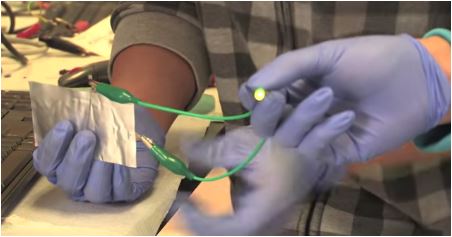There’s now a safer alternative to commercial batteries. It won’t even catch on fire if you drill through it.
Stanford University scientists have created an inexpensive, high-performance aluminum battery that’s long-lasting and offers a quick charge.
 Stanford researchers work on an aluminum battery.
Stanford researchers work on an aluminum battery.
“We have developed a rechargeable aluminum battery that may replace existing storage devices, such as alkaline batteries, which are bad for the environment, and lithium-ion batteries, which occasionally burst into flames,” said Hongjie Dai, a professor of chemistry at Stanford.
Researchers have been trying to develop a commercial aluminum-ion battery for many years because of the material’s properties- it’s inexpensive, is not very flammable and offers high-charge storage capacity. However, years of research has not provided the public with a commercially viable aluminum-ion battery.
How an aluminum-ion battery works
The battery consists of two electrodes: a negatively charged anode made of aluminum and a positively charged cathode.
The Stanford team used graphite to make up the cathode and found it performed well.
The team then placed the aluminum anode, graphite cathode and an ionic liquid electrolyte inside of a flexible polymer-coated pouch.
Aluminum batteries could act as a replacement for the potentially hazardous lithium-ion batteries used in laptops and cellphones.
“In our study, we have videos showing that you can drill through the aluminum battery pouch, and it will continue working for a while longer without catching fire, but lithium batteries can go off in an unpredictable manner— in the air, the car or in your pocket. Besides safety, we have achieved major breakthroughs in aluminum battery performance,” said Dai.
One of the team’s breakthroughs included charging time. Traditional battery charging could take up to hours, but the aluminum-ion prototype brought charging time down to about a minute.
The prototype was also found to be durable, withstanding more than 7,500 charge-discharge cycles without any capacity loss (as opposed to 100 cycles in other prototypes and the 1,000 cycles of a lithium-ion battery).
Future Applications
An aluminum-ion battery of this nature could potentially be used to store renewable energy, create an environmentally friendly alternative to disposable alkaline batteries and, due to its flexibility, be used in flexible electronic devices.
For more information visit Stanford University.
Advertisement
Learn more about Electronic Products Magazine





